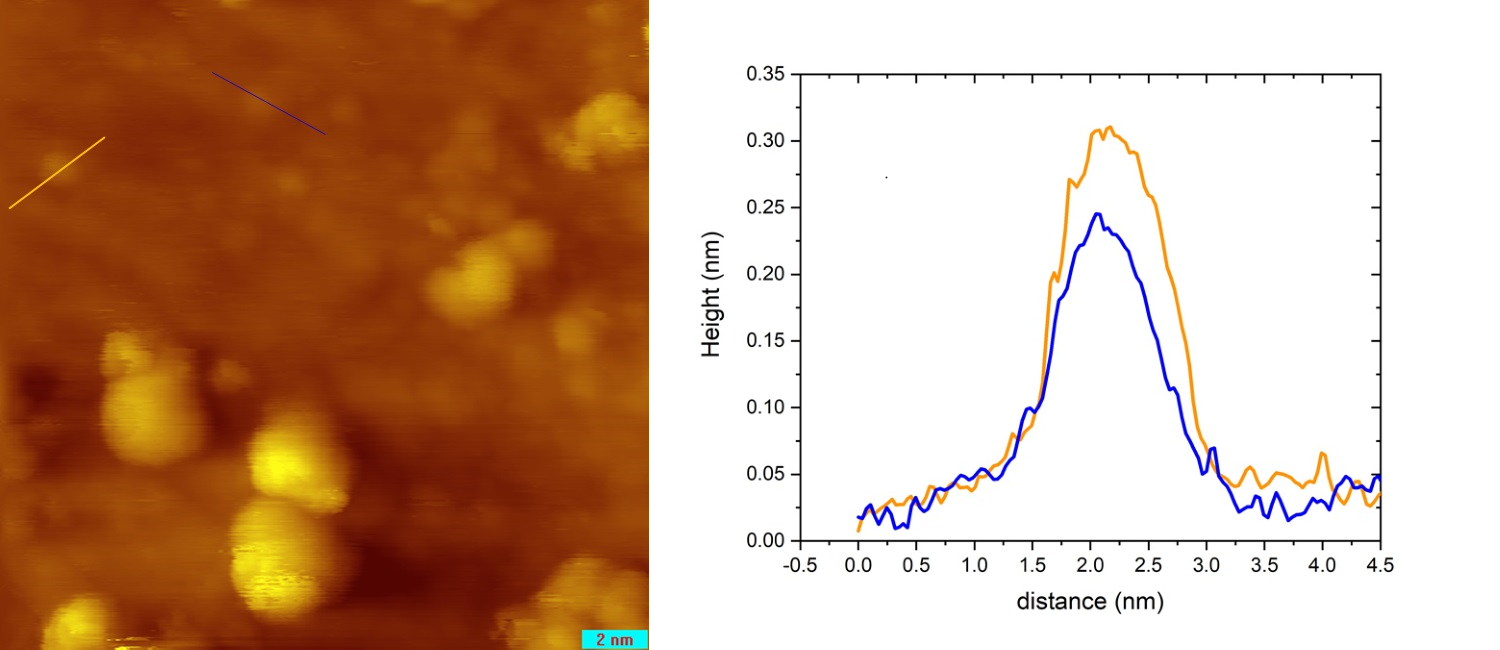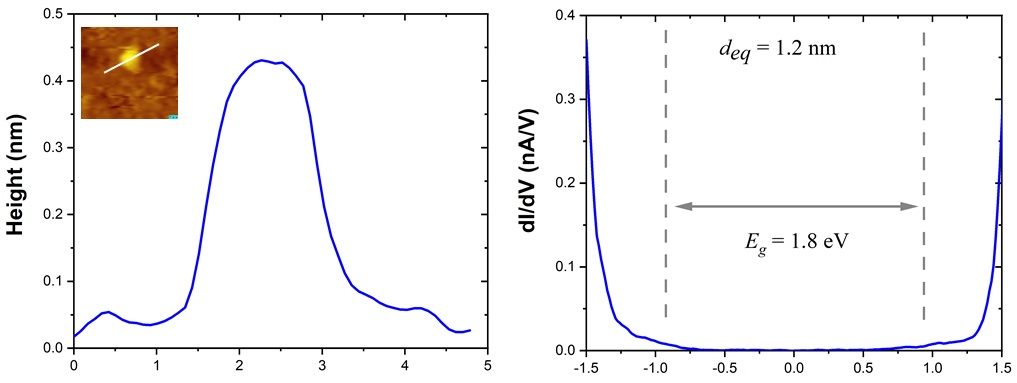Morphology and electronic properties of incipient soot by scanning tunneling microscopy and spectroscopy
Since they have a complex structure with a graphene-like core, carbonaceous nanoparticles represent an interesting material, which encompass research fields ranging from environment to energy applications and astrophysics. In particular, an interesting aspect is their interaction with hydrogen. Indeed, in a flame, the interaction between carbonaceous structures and hydrogen is important for the soot formation process. This interaction could be relevant for hydrogen storage, while the formation of H2 molecules from super-hydrogenated carbon structures in the interstellar environment is relevant for astrophysics research.
The gold on mica thermometer that we have developed (more details) is a suitable substrate for the sampling of carbonaceous nanoparticles, in order to study their morphology. The starting point of our investigation was a morphological and electronic characterization of soot particles, thermophoretically sampled on an atomically flat gold film on a mica substrate. Sampling was performed in such a way to collect small particles, with a diameter of few nanometers. This study represents the first STM observation of these small particles, made of one or few molecules.

Figure 1: Left: Typical STM image of incipient soot particles. Image area 50 nm × 50 nm. Image acquired using –1.6 V and –0.6 nA. Right: Height profiles of the two particles indicated in the STM image.
Scanning tunneling spectroscopy provides a measure of the single-particle density of states, from which the electronic band gap can be derived for individual particles. Figure 2 presents the STM image of a carbonaceous nanoparticle, the corresponding height profile, and the STS differential conductance spectrum of the particle with equivalent diameter of 1.2 nm. The equivalent diameter is that of a sphere with the same volume of the particle, assuming that the observed shape is due to a flattening of the particle on the substrate.

Figure 2: STM image (inset) and height profile of a particle (left panel) and the corresponding STS differential conductance spectrum (right panel). The STM measurement yields a particle diameter of 2.5 nm and a height of 0.4 nm. Image acquired using –1.6 V and –0.7 nA.
Publications:
- Stefano Veronesi, Mario Commodo, Luca Basta, Gianluigi De Falco, Patrizia Minutolo, Nikolaos Kateris, Hai Wang, Andrea D’Anna, Stefan Heun: Morphology and Electronic Properties of Incipient Soot by Scanning Tunneling Microscopy and Spectroscopy, arXiv:2201.01743 [cond-mat.mtrl-sci].
- Stefano Veronesi, Mario Commodo, Luca Basta, Gianluigi De Falco, Patrizia Minutolo, Nikolaos Kateris, Hai Wang, Andrea D’Anna, Stefan Heun: Morphology and electronic properties of incipient soot by scanning tunneling microscopy and spectroscopy, Combustion and Flame 243 (2022) 111980.
Presented at:
- L. Basta, S. Veronesi, M. Commodo, G. De Falco, P. Minutolo, N. Kateris, H. Wang, A. D’Anna, S. Heun: Morphology And Electronic Properties Of Incipient Soot By Scanning Tunneling Microscopy And Spectroscopy, 44th Meeting of the Italian Section of the Combustion Institute, Naples, Italy, June, 5-8, 2022 (poster). [Abstract] [Poster]